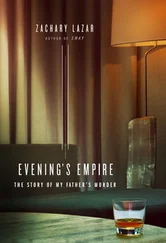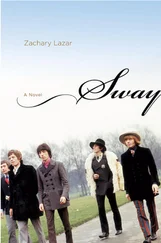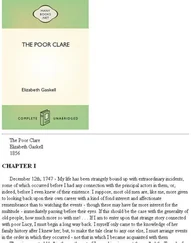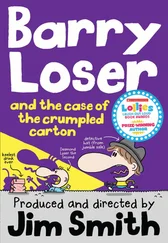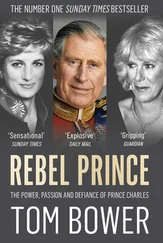I thought, wolves and lambs, predators and victims, winners and losers, deceivers and deceived. Except of course that everyone is all of those things. God says to David, And so now, the sword shall not swerve from your house evermore. The sword that comes from outside, in the form of enemies, but also the sword that comes from inside, the sword with which we bifurcate ourselves.
In this way, everyone is yored in the end.
At her house back in Talbiyeh, Rachel showed me some of Eliav’s belongings, which she had in boxes and flat files in her study. In particular, she showed me an oil painting made by Eliav when he was only seventeen, a portrait of his father, Bellen. The poet’s homely face was depicted as it was — craggy, eccentric, bespectacled — but with a willful ugliness that rendered it somehow beautiful. The cheekbones and the eye sockets were etched in thick jagged lines, blacks and reds and beiges, like some mask from a thousand years ago. It seemed to have been painted, like all the other work of Eliav’s that Rachel showed me that afternoon, out of a pure and purely unreflective talent. Eliav had been a prodigy, it turned out. That both the artist and his subject were dead now gave the painting of his father an uncanny sense of permanence. There was the watcher and the watched, forever fixed in that relationship.
There were sketchbooks from his high school years, along with photo albums of more elaborate pieces — paintings and also sculptures of clay, papier-mâché, and even cast bronze. It’s the sketchbooks, though, that I remember particularly well. In them, Eliav would spend five or six consecutive pages executing colored drawings in the styles of various modern masters: Cézanne, Picasso, Matisse, Klee, Kandinsky, Pollock, De Kooning. Five or six pages would be all it took for him not only to master the particular vocabulary of the artist he was imitating but to ingeniously explore it in different ways through his own inventions. There were no blank pages, no false starts or scratch-outs, no sheets removed. The sketchbook was like a primer on twentieth-century art, executed by a highly skilled draftsman who if anything was a little too skilled. The talent was a kind of shorthand, all technique. I wondered what someone would do with that kind of talent once they got old enough to learn that it was not the same as making “art,” that in fact “art” as it exists now has practically nothing to do with such technique.
There was another artifact from Eliav’s youth that I remember, though it was not impressive in the same way — it was, perhaps deliberately, unimpressive on the level of technique. It was a series of black-and-white photographs that Eliav had taken in the streets of Tel Aviv in the late 1980s and early ’90s — portraits of ordinary people, working people, men and women in dry cleaners, supermarkets, hair salons, bakeries, garages. The subjects were never looking into the camera. Instead the images had a random, even accidental quality — a quality of neutral surveillance, of ordinary people not realizing they were being looked at — that made them more haunting. I think Eliav understood that these photographs were haunting and perhaps he even understood why. I think this because of a quotation he thought to include on the last page of the album in which he’d arranged the photographs at the age of eighteen. The quotation, from Kafka, was in Hebrew, but Rachel paraphrased it for me (I have given it here as translated by Willa and Edwin Muir):
In a light that is fierce and strong one can see the world dissolve. To weak eyes it becomes solid, to weaker eyes it shows fists, before still weaker eyes it feels ashamed and smites down him who dares to look at it.
Rachel’s husband, Dov, had come quietly into the study and stood behind her now where she was seated in her chair, his hand on her shoulder. He was gruff, nearly silent, a white-haired and white-bearded physicist in an expensive blue suit and yarmulke.
“We’ve been going through these old boxes,” Rachel said to me then. “It was such a strange thing — we just happened to be moving to this new house right when Eliav died. I guess in some ways that was good. It obviously gave us something else we had to think about.”
She had the album of photographs still in her lap. There was another thing she wanted to tell me that afternoon, it turned out, something she’d never told anyone before, except for Dov. She told me that Eliav used to say that he had a recurring nightmare. In this recurring nightmare, he was forced to stand in an empty room and watch while his father was executed.
“I always thought that was strange,” she said, looking down, the photo album in her lap now forgotten, unseen. “Not for the obvious reason, but because I had never thought of it as happening in a room. I had pictured it happening outside. But in the nightmare it would happen in a room. An empty room. ‘I was in the room where it happened,’ Eliav would say.”

In my hotel room that night, I read Haaretz, then the Jerusalem Post, all the while the TV news on in the background, a stream of images accompanied by words I couldn’t understand. Apart from Iran and the fear of Iran, the news seemed to be largely about fanaticism — extremist Jewish settlers who had attacked an Israeli military base in the West Bank, some ultra-Orthodox men who had spat on a young girl walking to school in clothes they deemed insufficiently modest. Though I’d arrived just a few days ago, Israel was already unlike what I remembered from my last trip. I felt surrounded this time not by ancient intractable conflict but by cynical gloating — Orthodox women in clothes so unflattering you wondered where they found the stores that sold such items, their sons in football jerseys and basketball shoes and embroidered kippot . I connected my laptop to the hotel’s Wi-Fi and looked further into the story about the settlers who’d attacked the military base. John Walker Lindh — that’s who they reminded me of — the suburban American boy who through aimless disaffection had wound up joining the Taliban. The settlers, I learned, were part of a broader movement known as the Hilltop Youth, who desecrated mosques, assaulted Palestinians and destroyed their fields, and had now attacked one of Israel’s own military bases. It was a photograph, as it often is, that sealed my interest. The image seemed to encapsulate all the contradictions of this group of mostly young men and their romanticized relationship to violence — the organic farming in the desert, the camping and mountaineering T-shirts, the scraggly beards and talisim and ornate skullcaps, their remote outposts consisting of corrugated aluminum sheds, or just tents and old sofas, plastic tarps and rifles and guitars. The incoherent need to believe in something — the need that then goes looking for a cause, an ideal. Fighting the Man. Fighting the Palestinians. Fighting nothing. I had a sudden waking dream there in my hotel room of David Bellen being marched across a field by some of those boys in their beards and cargo pants. I saw it very clearly: Bellen struggling forward over the rocky ground, stooped over and handcuffed, his arms exposed by the short sleeves of a stained white undershirt. His glasses were broken, his face smeared with blood. He was like an animal left in their care, a repository of some collective shame that had to do with the boys’ need to punish him. Whatever game they were playing now was played solemnly, without words, without taunting or joy. It was obvious that Bellen knew what would happen next.

Читать дальше


